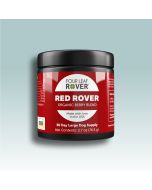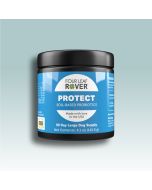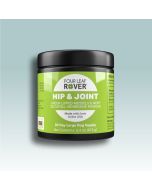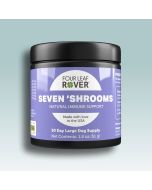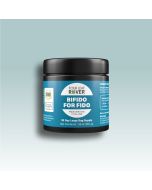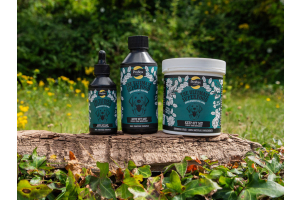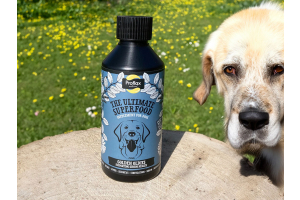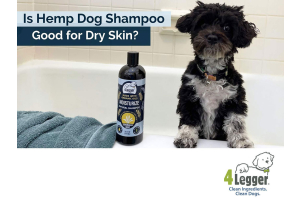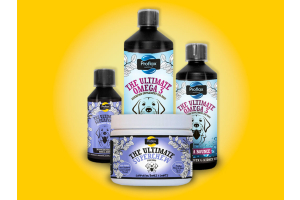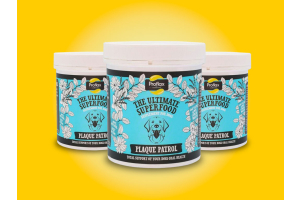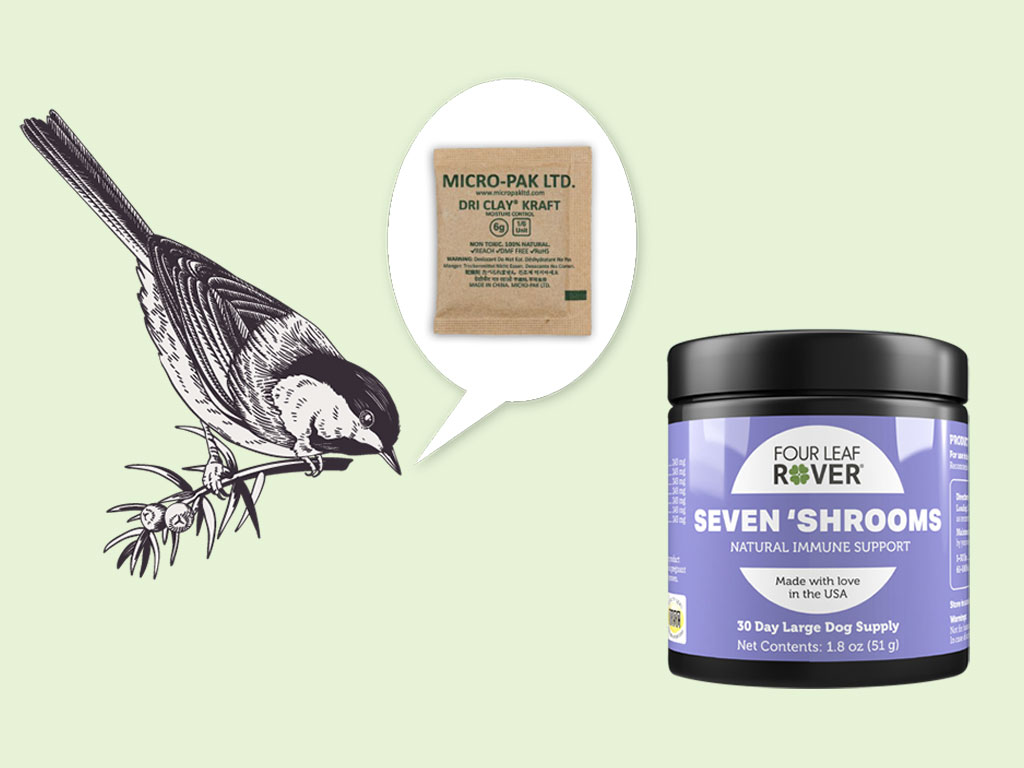
Even Four Leaf Rovers desiccant packs found inside their tubs are sustainable! While most companies use silica packs to keep moisture out of their products, Four Leaf Rover use bentonite clay.
Why do we use bentonite clay?
- It's environmentally friendly - 100% natural bentonite clay requires no water or chemicals, and little energy to make. This is far more sustainable than the energy-intensive production of synthetic silica gel, which requires chemical feedstocks and significant fresh water, while also producing pollutants, effluents, and discharges.
- Performs better - Bentonite clay outperforms silica gel, reducing humidity faster and to lower levels.
- Non-toxic - Four Leaf would never put anything in their jars that could harm your dog. Bentonite clay is completely natural and presents no risk to your dog. In fact, bentonite clay helps bind to harmful heavy metals.
- Reusable - Don't just throw that pack away when your jar is empty. Recycle your jar and use the desiccant pack for a variety of useful tasks around the house.
Check out these useful tips.
How to re-use your Four Leaf Rover Desiccant packs
Ever wondered what those little square packets are doing inside so many product packages? They’re called desiccant packs. Desiccant packs help control moisture. Less moisture means less risk of mold and spoilage of supplements or food products. You’ll also see desiccant packs in non-food products that could be harmed by moisture … electronics or shoes,, or inside a new wallet or purse, for example.
Most people find desiccant packs a nuisance ... so you just throw them away. But did you know you there are lots of reasons to save them and put them to good use?
How To Re-use Desiccant Packs
Yes, you can re-use desiccant packs. If they seem moist, heat them first in a 300F oven until they dry out. Then try some of these ideas.
Protect Leather Shoes: Moisture is very bad for leather (which is why you’ll find desiccant packs in a new box of shoes), If your shoes get damp, pop them into a box or a large ziplock bag with a desiccant pack or two, to stop them being ruined. This also works for gym shoes that get damp or sweaty.
Dry Out A Wet mobile phone: If you spill water on your cellphone, first dry off any visible liquid with a soft cloth. Then put the phone into a ziplock bag with a desiccant pack overnight. It works best if you remove the battery from the phone and put that in the bag separately, in case it got wet.
Stop Silver Tarnish: Silver easily gets tarnished and cleaning it is a chore. Instead keep silver jewelry or silverware in a baggie or box. along with desiccant packs.
Keep Coffee Dry: Coffee is notorious for getting moldy, and mold is toxic to health. Organic coffee is safest … and then keep it in an airtight jar with a desiccant pack. You can use this technique for other grocery products too … like brown sugar that gets hard, or flour that gets lumpy when damp.
Freshen Up Gym Bags: If your gym bag gets a bit stinky because it has sweaty clothes and towels in it, keep a couple of desiccant packs in the bag to remove moisture and prevent smells.
Keep Razor Blades Sharp: Razor blades tarnish if they get damp. Keep them clean by storing blades in a jar with a desiccant pack. They’ll last and stay sharp a lot longer!
Preserve Important Documents: Paper doesn't like damp, so you can use desiccant packs in file drawers or folders to keep important papers dry ... like your birth certificate or social security card, for example.
Stop Your Windshield Fogging: In wet or cold weather, your car windshield can fog because of damp inside the car. Keep a couple of desiccant packs on the dashboard near the windshield, and you won’t have to run your defogger as often.
Once you start re-using desiccant packs, you’ll find lots of ways to keep your things fresh and dry!
But there’s one thing to keep in mind if you use desiccant packs to keep moisture out of food.
What Desiccant Packs Are Made Of?
Most desiccant packs are made from silica. Silica is highly absorbent and low cost. It's synthetic and non-toxic. But some silica packs can also contain heavy metal salts like cobalt chloride ... and those are toxic.
Cobalt chloride helps monitor moisture, as it changes colour when damp. But it can also contaminate food, medicine, or supplements. Repeated exposure to cobalt chloride can cause skin problems, asthma, and adverse effects on the heart, thyroid, and bone marrow. Cobalt chloride is also a potential carcinogen.
Other desiccant packs are made from bentonite clay. Bentonite clay is chemically inert, non-hazardous, and has naturally attracts moisture. Testing has shown that bentonite clay offers higher absorption capacity than silica for most package conditions.
Bentonite clay is abundant, naturally occurring, and requires no chemical processing, additives, or solvents. It's also sustainable, with minimal energy required for processing.
If you’re re-using desiccant packs for food or supplements, bentonite clay is a better choice. And you won't have to worry about one breaking in a food or supplement container ... or your dog eating one if you drop it on the floor.
